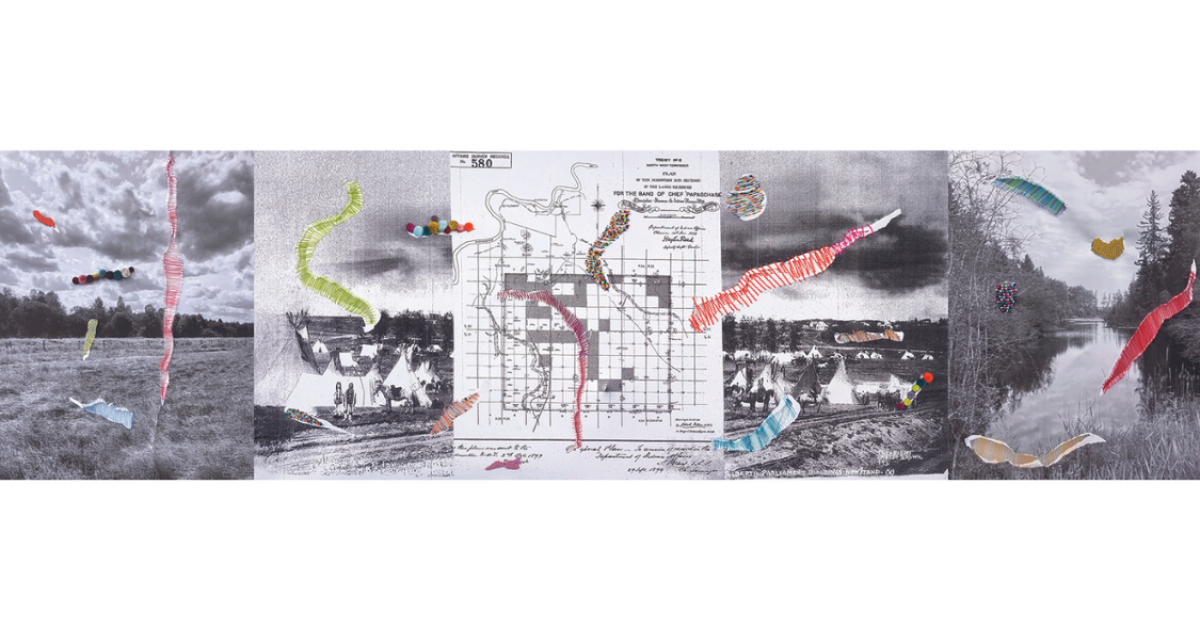New public artwork documenting Indigenous relation to the land installed in downtown Edmonton
DATE :
Indigenous relation to the land in amiskwaciwâskahikan (Edmonton) is the subject of a new artwork, Sipikiskisiw (Remembers Far Back) by Michelle Sound, which was coordinated by the Edmonton Arts Council and is currently being installed this week at the Edmonton Transit Service (ETS) shelter located at 10020-100 Street NW.
The transit shelter was recently renewed as the City of Edmonton works toward creating more safe, inclusive, and attractive public spaces for transit riders and the public.

Commissioned in 2022 under the City of Edmonton’s new Public Art Policy, the Edmonton Arts Council worked with three local Indigenous artists/curators to select an artist for this project. Edmonton Arts Council's Public Art Director David Turnbull said, “the new policy allows us to be flexible, responsive, and use curatorially-driven approaches to intentionally grow and develop a public art collection that is high quality, accessible, relevant, and representative of Edmonton’s diverse communities.”
“We are pleased to partner with Edmonton Arts Council and artist Michelle Sound to display this Indigenous art – which tells a meaningful story of those who were here before Edmonton was a city – in our transit space,” said Carrie Hotton-MacDonald, Branch Manager of Edmonton Transit Service. “Supporting talented artists and displaying their beautiful works of art helps to create more vibrant transit spaces for everyone to enjoy, and this work adds to the inventory of public art and murals in transit spaces.”
Like Sound’s artwork often does, Sipikiskisiw (Remembers Far Back) explores her Cree and Métis identity from a personal experience rooted in family, place and history.
Her artwork for the ETS shelter uses torn copies of archival images of an Indian Affairs Papaschase reserve survey map from 1899 and a photograph taken prior to 1907 of Indigenous men and tipis on the grounds of Fort Edmonton. The artist then mended the torn imagery using embroidery thread, caribou tufting, porcupine quills and beadwork.
The rips in the images are meant to “show the colonial violence that Indigenous people have experienced, including residential schools, intergenerational trauma, loss of language, and displacement from our territories,” explains the artist.
The mending of the images doesn’t fully obscure the rips, shares Sound, just as “the loss, grief, longing, and memory cannot be fully mended and the resiliency required to survive colonialism is also messy and fragile. These losses can never be fully healed but we can process our histories and realities through art, culture and stories.”
In an article about the artwork, Emily Riddle – one of the curators of the project – writes that the land on which the ETS shelter now sits was an important outlook for Indigenous Peoples prior to the construction of downtown Edmonton. Said Riddle, “When the jury met, Michelle Sound was at the top of each of our lists of artists whose work we wanted to see in Edmonton...in stitching together these two archival records with threads, beads, rick rack and tufts, Michelle Sound asks us to imagine a restitched present while we are in transit. On the hill above the site of both these photos, we are very much embedded in this history and in the forever now of a Nehiyaw present.”

